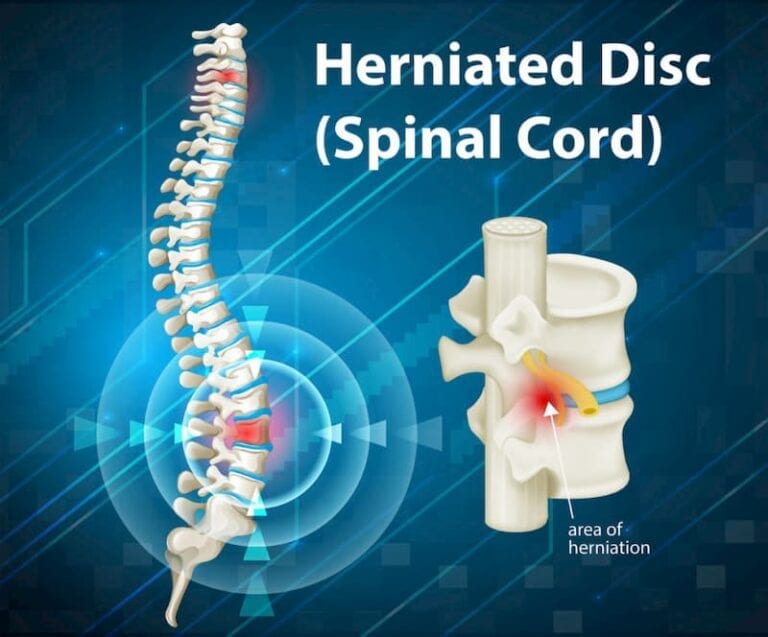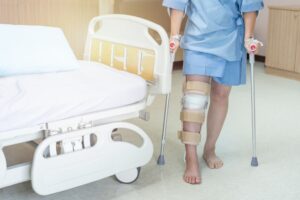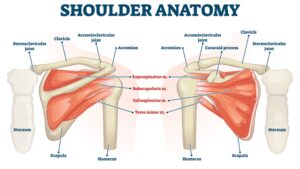A disc bulge or protruding disc is when the disc in between the vertebral bones of the spine bulges out from its normal position without rupturing. The discs function as shock absorbers or a cushion to have smooth, fluid motion in the spine. This structure is composed of a tough exterior circular shape called the annulus fibrosus that encapsulates the soft, jelly-like, interior nucleus pulposus and prevents it from leaking. Each vertebra is separated by the disc that allows the bones to withstand forces of compression and torsion from external forces. The lumbar spine is mostly impacted by disc bulging specifically located at L3-4, L4-5, and L5-S1 levels due to increased body weight bearing on these levels.
Human discs change dramatically during the aging process due to the water content of the disc diminishing causing the discs to become stiffer and more ineffective in absorbing the compression or tension forces in the spine. Other factors that cause the disc to bulge include repetitive physical activity such as twisting and bending, direct traumas, or unexpected injuries to the spine that may weaken the disc. This pathology is common in both young and old patients.
Bulging discs are commonly misunderstood as herniated discs.
Herniated discs are more serious than bulging discs because the outer layer of the disc, or annulus fibrosus, has ruptured, thus causing the inner layer, or nucleus pulposus, to push out. Disc bulges may progress to herniated discs if neglected. Surrounding structures like the nerve roots may be irritated and inflamed, causing pain that radiates to the lower legs, weakness of the extremities, numbness and “pins and needles” in the legs. It may also narrow the spinal canal which encases the spinal cord. The symptoms are usually aggravated by prolonged sitting, standing, walking, or during lifting activities.
Herniated discs have three levels according to the severity of the rupture in the disc namely:
1. Disc bulge, also known as prolapse, as discussed above.
2. Extrusion – where the annulus fibrosus ruptures, but the nucleus pulposus is still confined internally, and
3. Sequestration- where both of the annulus fibrosus and the nucleus pulposus are torn and the nucleus pulposus may move outside of the disc proper impacting the surrounding structures.
Diagnosing Disc Bulging
Diagnosis of disc bulging conditions requires a thorough examination and several diagnostic tests like X-rays or MRIs. Physicians also may suggest a myelogram or CT Scan.
Disc Bulging or Herniated Disk Injury Treatment Options
Conservative treatment
• This includes physical therapy rehabilitation that focuses on reducing the pain and inflammation around the disc using equipment such as electrical stimulation, manual therapy, strengthening, and stretching programs. They may also recommend the temporary use of a back brace. Depending on the severity of symptoms, physical therapists normally suggest measures such as proper lifting techniques, good posture, maintaining a healthy weight, and compliance of home exercises.
• Non-steroidal anti-inflammatory drugs to manage inflammation. Physicians may also suggest nerve blocks or spinal epidural injections to help decrease inflammation near the spinal cord and nerve roots.
Surgical treatment
• Only considered if there are no changes in pain and progressive functional loss is noticeable.
• Disc Replacement: Involves removing the disc and replacing it with an artificial disc.
• Discectomy: Removing the pressure on the nerve root caused by the disc bulge by removing part of the disc.







